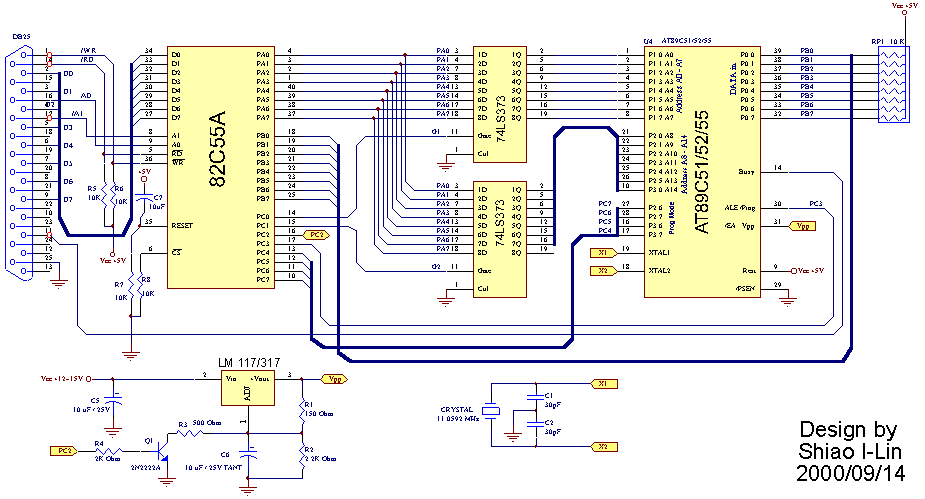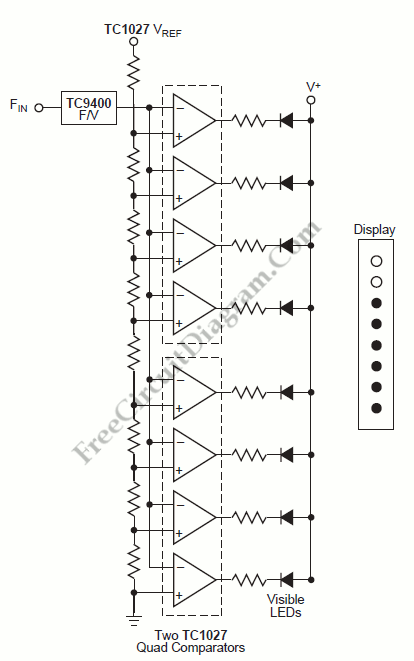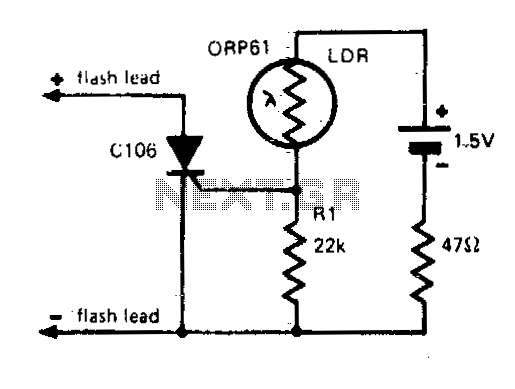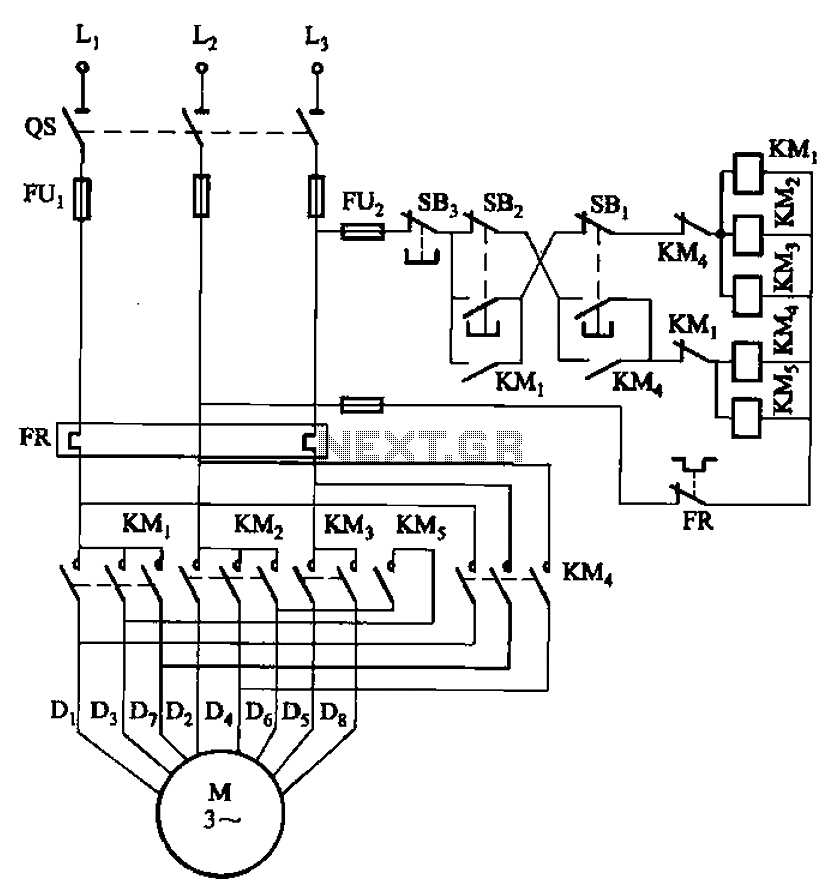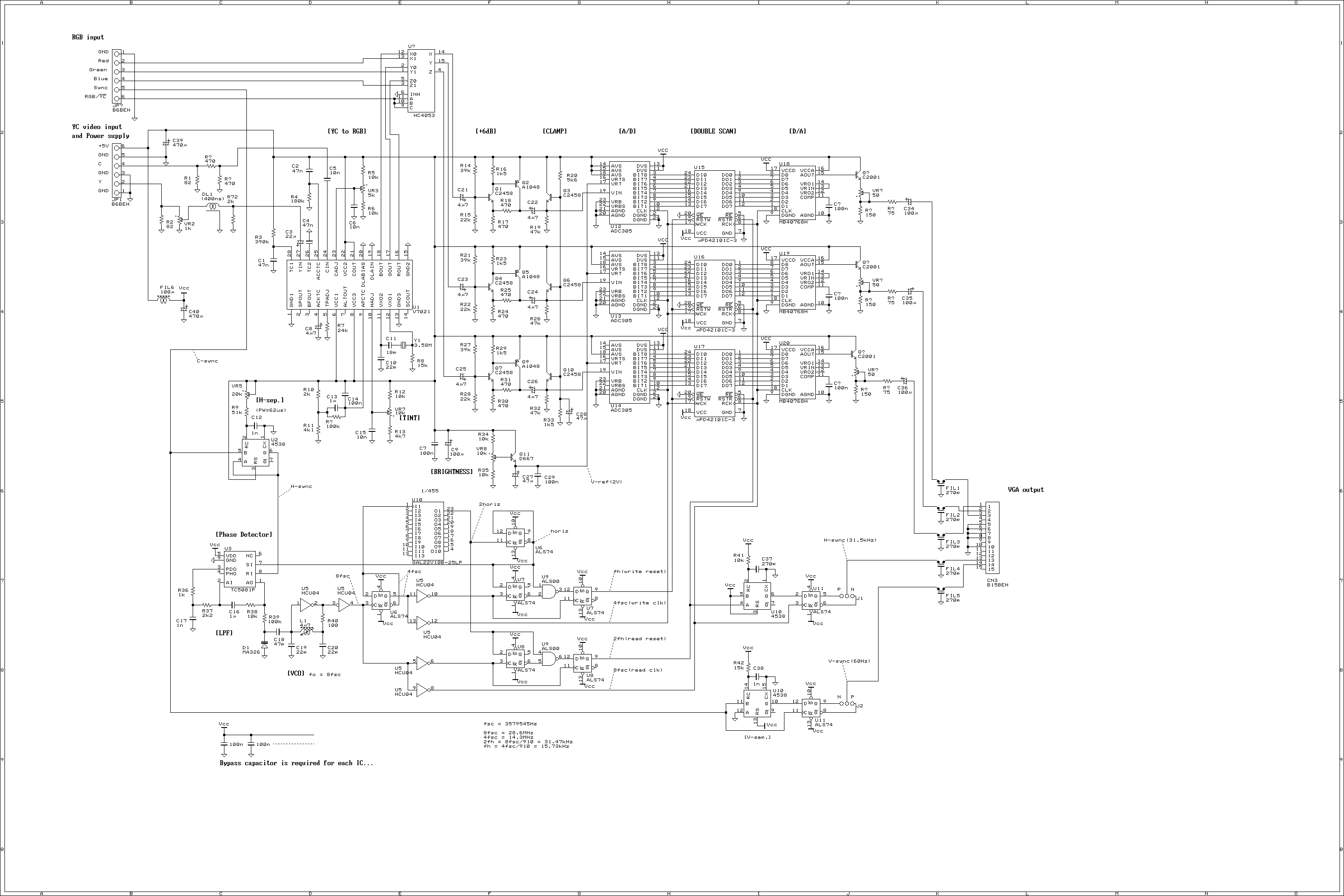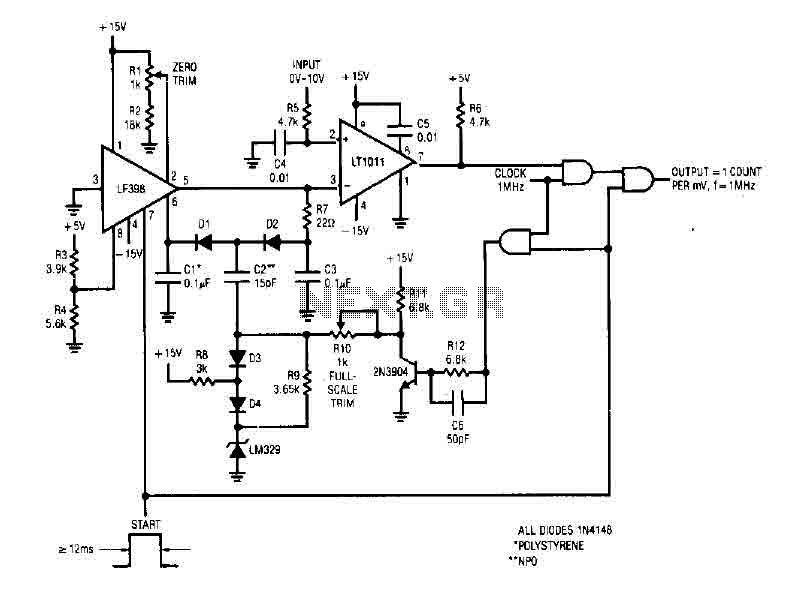
Video speed 6-bit Flash A/D converter
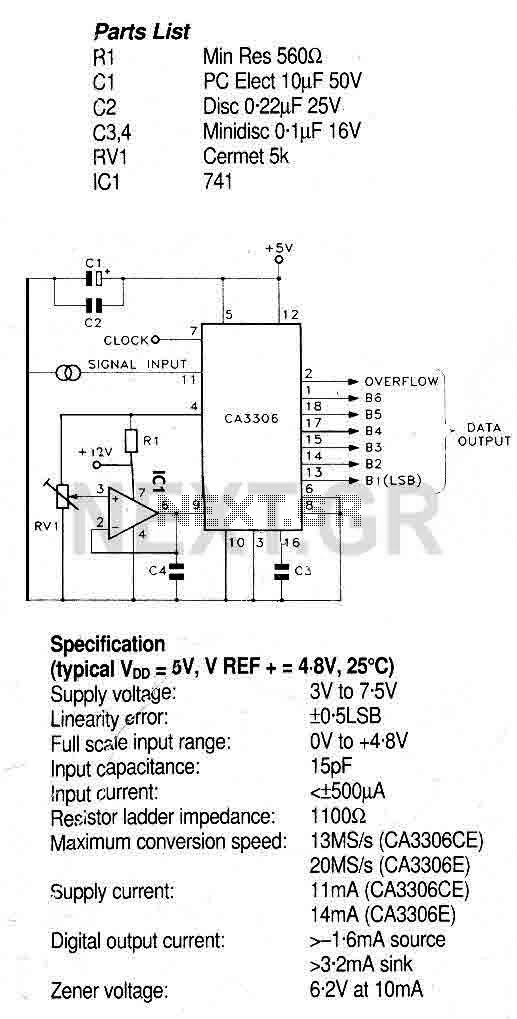
This circuit utilizes the CA3306, a family of CMOS parallel (flash) analog-to-digital converters designed for low power and high-speed applications. The CA3306CE operates at sampling rates of up to 10 million samples per second, while the CA3306E can achieve rates of up to 15 million samples per second. This capability allows for the digitization of analog signals with bandwidths of up to 5 MHz or 7.5 MHz with 6-bit accuracy. Additionally, an overflow input enables the connection of two devices in parallel, effectively doubling the conversion speed.
The CA3306 series is particularly beneficial in applications where rapid data acquisition is essential, such as in instrumentation, communications, and digital signal processing. The architecture of the CA3306 employs a parallel conversion method, which significantly enhances the speed of the conversion process compared to traditional sequential converters.
The device's ability to handle high sampling rates makes it suitable for applications requiring real-time signal processing. The 6-bit resolution, although relatively low by modern standards, is adequate for many applications where precision is not the primary concern, allowing for efficient processing of signals in various electronic systems.
The overflow input feature is particularly noteworthy, as it allows for the cascading of multiple CA3306 devices. This configuration is advantageous for applications that demand higher throughput, as it effectively doubles the sampling rate without compromising the integrity of the data. When two devices are connected in parallel, the system can handle higher data rates, making it ideal for high-frequency signal applications.
The CA3306 family’s low power consumption is another critical aspect, making it suitable for battery-operated devices and portable applications. Its CMOS technology ensures minimal power draw while maintaining high performance, thus extending the operational lifespan of portable electronics.
In summary, the CA3306 series of analog-to-digital converters provides an effective solution for high-speed, low-power applications, with features that accommodate a range of operational needs in modern electronic design.This circuit use the CA3306 a family of CMOS parallel (flash) analogue to digital converters designed for low power, high speed applications. The CA3306CE operates at sampling rates up to 10 million samples per second and the CA3306E up to 15 million samples per second permitting analogue signals with bandwidths up to 5MHz or 7.5MHz to be fully digitised to 6-bit accuracy.
An overflow input allows two devices to be connected in parallel will permit conversion speed to be doubled. 🔗 External reference
The CA3306 series is particularly beneficial in applications where rapid data acquisition is essential, such as in instrumentation, communications, and digital signal processing. The architecture of the CA3306 employs a parallel conversion method, which significantly enhances the speed of the conversion process compared to traditional sequential converters.
The device's ability to handle high sampling rates makes it suitable for applications requiring real-time signal processing. The 6-bit resolution, although relatively low by modern standards, is adequate for many applications where precision is not the primary concern, allowing for efficient processing of signals in various electronic systems.
The overflow input feature is particularly noteworthy, as it allows for the cascading of multiple CA3306 devices. This configuration is advantageous for applications that demand higher throughput, as it effectively doubles the sampling rate without compromising the integrity of the data. When two devices are connected in parallel, the system can handle higher data rates, making it ideal for high-frequency signal applications.
The CA3306 family’s low power consumption is another critical aspect, making it suitable for battery-operated devices and portable applications. Its CMOS technology ensures minimal power draw while maintaining high performance, thus extending the operational lifespan of portable electronics.
In summary, the CA3306 series of analog-to-digital converters provides an effective solution for high-speed, low-power applications, with features that accommodate a range of operational needs in modern electronic design.This circuit use the CA3306 a family of CMOS parallel (flash) analogue to digital converters designed for low power, high speed applications. The CA3306CE operates at sampling rates up to 10 million samples per second and the CA3306E up to 15 million samples per second permitting analogue signals with bandwidths up to 5MHz or 7.5MHz to be fully digitised to 6-bit accuracy.
An overflow input allows two devices to be connected in parallel will permit conversion speed to be doubled. 🔗 External reference
Warning: include(partials/cookie-banner.php): Failed to open stream: Permission denied in /var/www/html/nextgr/view-circuit.php on line 713
Warning: include(): Failed opening 'partials/cookie-banner.php' for inclusion (include_path='.:/usr/share/php') in /var/www/html/nextgr/view-circuit.php on line 713
